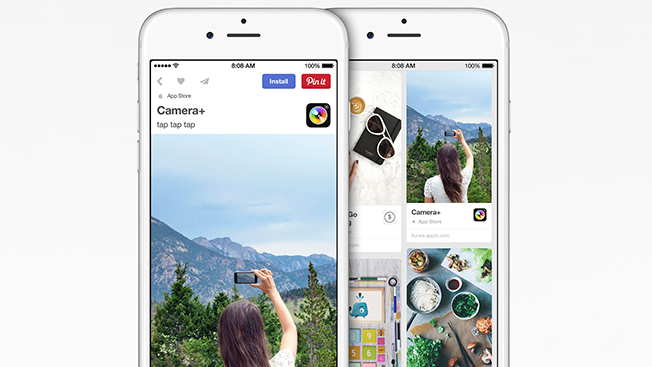adweek.com

Will app installs work for Pinterest?
Mobile app-install ads have been fundamental to Facebook and Twitter's rise as mobile advertising players over the past two years, and now Pinterest wants in on the action.
Last week, Pinterest teamed up with Apple to roll out App Pins—a feature that lets users save and share apps to boards. For example, someone looking for a recipe on Pinterest may see a meal-planning app pop up in search results. Clicking on the posts then lets a user download the app straight from Pinterest.
With 75 percent of the social network's traffic coming from mobile, the new tool seems like a natural fit for Pinterest marketers. But Pinterest may also be too late to capitalize on the tactic since Facebook and Twitter are already bolstering their revenues with app-install ads.
"They're definitely a little behind, but there is still a massive opportunity for them to integrate an app-install format," said Guillaume Lelait, general manager at mobile marketing agency Fetch. "Pinterest is different in that users are already coming to the platform with a discovery and purchasing mindset."
As part of the partnership, social media-averse Apple has also set up an account with a few boards of themed apps.
App Pins are the latest attempt from Pinterest to make it easier for users to find things they're interested in. In 2013, the company started packing more text into pins. And last year, Pinterest started testing Promoted Pins—ads that are bought based on keywords.
The San Francisco company told The New York Times it doesn't plan to make money off App Pins. But app install ads have been a boon for Facebook and Twitter, and it's hard to imagine that Pinterest isn't interested in tapping into the lucrative opportunity. Mobile accounted for 69 percent (or $2.5 billion) of Facebook's revenue during the fourth quarter, while smartphone and tablet ads generated 85 percent of Twitter's third-quarter ad money.
Lelait also noted Pinterest has a bevy of targeting options for marketers to home in on specific interests. "Pinterest is a platform that is based on customization and curation. People's Pinterest feeds are filled with content that they have personally chosen to follow, so the app-install cards will need to be highly relevant to the content they search for and pin to avoid feeling spammy and intrusive on users' feeds."
Targeted tweets
While Pinterest doesn't plan to use its new tool for advertising, a new case study from financial savings app Acorns shows that app-install ads pay off.
While Pinterest doesn't plan to use its new tool for advertising, a new case study from financial savings app Acorns shows that app-install ads pay off.
Acorns launched in August as an app that saves spare change on credit and debit card purchases. Users first link a credit card number to the app, which then rounds up the amount of a transaction to the next dollar. The extra money is then saved away to use later.
The financial startup used mobile app install ads on Facebook, Twitter and mobile ad networks to drive downloads of the app.
Promoted Tweets on Twitter ran from August to November 2014, targeting money-related keywords. The paid tweets generated a 3 percent engagement rate. "Basically we were able to find who was our audience and serve the ads directly to them," said Sami Khan, director of user acquisition at Acorns.
In the first 90 days that Acorns launched, one in five of the company's downloads came from Twitter.
The company paid less than $4 per app install, which it claims is significantly lower than the $8 to $10 that financial companies typically pay to acquire users.
The Acorns team also experimented with the ad's creative, changing up images on the fly. Khan said pictures that were simple and to the point performed well.
"Twitter ads for mobile app installs work better when they have pictures attached," Khan said. "So we needed to create images that related to our value proposition."
No comments:
Post a Comment